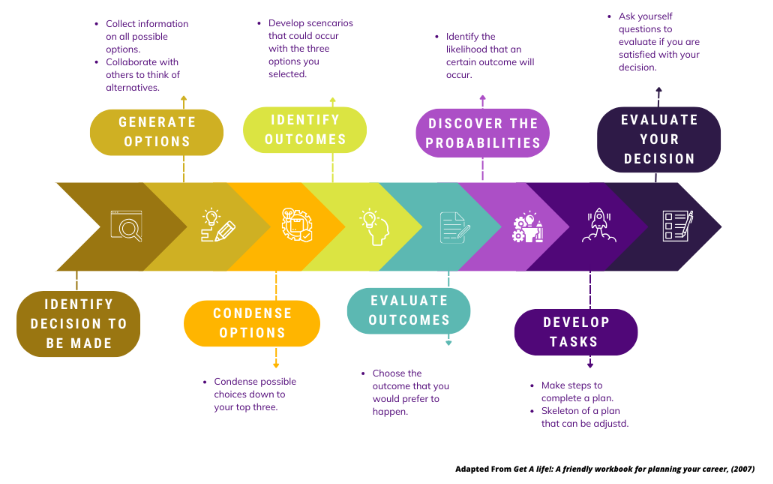Why Decision-Making and Goal Setting Matter for Students
Making good decisions and setting goals are super important for students. Here’s why:
Take Charge of Your Life: By making thoughtful decisions and setting clear goals, you can effectively manage your life and pursue your dreams—whether they are personal, academic, or career-related.
Stay Motivated: Goal-setting helps you stay focused and motivated, which can boost your grades and help you grow as a person.
Choose Wisely: Learning to weigh the pros and cons of different choices allows you to pick the best path forward.
Build Your Future: Leveraging the information and resources at your disposal will help you build a solid foundation for success, whether you're choosing a college major, planning a career, or balancing your social life with your studies.
Additional Information: Decision Making | Goals
Types of Decisions

Decision-Making Strategies
- Rash: Using little thought or examination
- Fatalistic: Letting fate decide
- Conformable: Letting others influence decisions or doing what others might be doing
- Delaying: Procrastinating deciding to delay the process
- Avoidance: Choosing the alternative most likely to avoid the worst result
- Logical: Choosing the alternative that has the most desirable outcome
- Overthinking: Getting overwhelmed with analyzing alternatives
- Instinctive: Subconscious choice based on what your gut is telling you
Adapted from Bender, D. (2007). Get A life!: A friendly workbook for planning your career.
Steps to Decision Making

Challenges in Making Decisions
It's important to know when to make a quick decision and when to take your time. Being too hesitant can be just as problematic as rushing into a decision without thinking it through.
Know when you truly have control over a situation and when you don't. People often mistakenly believe they have control when they don't, or they fail to realize their potential to influence the outcome.
Sometimes, people aren't sure what their priorities are. It's important to clearly identify and rank what matters most to you to make better decisions.
